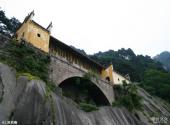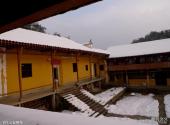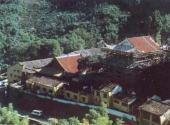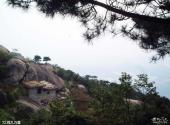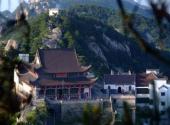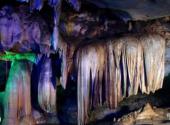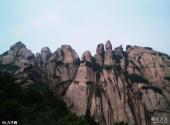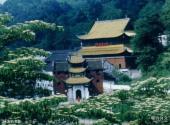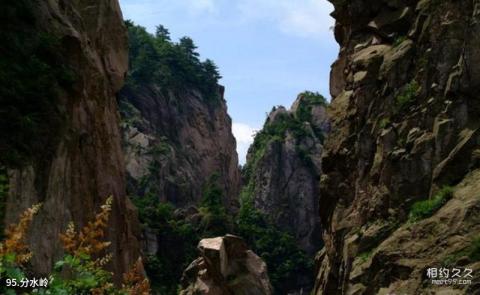
Scenic spot introduction:
Jiuhua Mountain has been a famous tourist destination in my country since ancient times. Together with Wutai Mountain, Emei Mountain and Putuo Mountain, it is known as one of the four famous Buddhist mountains in China and has the reputation of "Lotus Buddha Kingdom". Jiuhua Mountain covers an area of 120 square kilometers. The scenic area has majestic mountains, beautiful peaks, lush vegetation, waterfalls and springs. The climate is mild and humid, with distinct four seasons. The natural scenery is integrated with the cultural landscape and Buddhist atmosphere. It is known as the "No. 1 Mountain in the Southeast" and is also the main entrance and main scenic area in the north of Anhui's "Two Mountains and One Lake" (Huangshan Mountain, Jiuhua Mountain, Taiping Lake) golden tourist area.Jiuhua Mountain was formerly known as Lingyang Mountain and Jiuzi Mountain. It was named after its nine peaks that resemble lotus flowers. It was renamed Jiuhua Mountain during the Tianbao period of the Tang Dynasty (742-756). The flesh bodies of eminent monks from past dynasties are a major feature of Jiuhua Mountain. In the perennially humid climate, the flesh bodies of eminent monks can remain intact after their death, which is very magical. There are now five flesh bodies available for worship.
Attractions distribution:
Jiuhua Mountain Scenic Area is a place of 99 peaks of various sizes, with the most majestic peaks being Tiantai, Shiwang, Lianhua, and Tianzhu, so the ancients called it "Jiuzi Mountain". The climate in the scenic area is pleasant, and there are many ancient Buddhist temples and incense smoke. There are more than 94 existing temples and more than 700 monks and nuns. It is an authentic Buddhist holy land.Scenic spot qualifications:
National 5A scenic spot, World Cultural Heritage, World Natural HeritageScenic spot features:
Famous Buddhist mountains, the Buddha's body temple, pilgrimages, religious landscapes, ancient Buddhist temples, famous mountains, waterfalls, forests, strange peaks and rocks, riversScenic spot map:
travelling guideline:
Jiuhua Mountain Body Hall of the Lotus Buddha Country: Since the Tang Dynasty, thirteen true Bodhisattvas have appeared in Jiuhua Mountain. There are now three major body halls in the mountain, among which Shenguang Ridge is dedicated to the physical body of Jin Qiaojue, and the Centenary Palace is dedicated to the Wuxia Zen Master (i.e. Hai Hai). Shuangxi Temple enshrines the physical body of Monk Daxing.
There are many important Buddhist festivals in Mount Jiuhua. The most important ones are the Buddha’s Birthday (the eighth day of the fourth lunar month, Gion Temple), the Buddha’s Enlightenment Festival (the eighth day of the twelfth lunar month), and the Guanyin Festival (the birthday of Guanyin, the second day of the lunar calendar). the 19th day of the lunar month, the Enlightenment Day, the 19th day of the 6th lunar month, the Nirvana Day, the 9th lunar month), the Ksitigarbha Dharma Fair (the 30th day of the 7th lunar month, Huacheng Temple, the Hall of Flesh Body), the Jiuhuashan Temple Fair (the 3rd day of the 7th lunar month each year) Ten, Tiantai Peak) and Ziyi Ri (the fifteenth day of the seventh lunar month). If you are interested, you can choose a day to go.
Mount Jiuhua is a famous Buddhist mountain. The "Jiuhua vegetarian food" made from local delicacies and game is crispy, tender and nutritious. Visitors should not miss it here.
Two-day tour of Jiuhua Mountain:
On the first day, after buying a ticket in Kecun, you can take a tourist bus to the Jiuhua Street Scenic Area.
Jiuhuashan Kaishanzu Temple → Huacheng Temple (Jiuhuashan Historical Relics Museum) is located in the center of Jiuhua Street, with a square and a life-release pond in front of the door. Visitors can offer incense and worship Buddha here, and can also pick out cultural relics and pictures of interest to have a general understanding of Jiuhua Mountain.
Walk to Foguang Ridge from Huacheng Temple to pay homage to the physical body of Jin Jizo. On the way, you will pass Amitabha Hall, Jizo Zen Temple, Yueshen Hall, Shangzen Hall, Jingjie Jingshe and other places.
After leaving Jiuhua Street, there are Min Gong Hall (Goddess of Wealth), Zhan Tan Lin (Dabei Tower), Tonghui Temple (Master Renyi’s body) and other sights
Tour route:
One-day tour
Line A: Huacheng Temple - Hall of Flesh Body - Min Garden - Rooftop
Line B: Huacheng Temple - Hall of Flesh Body - Centennial Palace - Five Hundred Arhats Hall - Tonghui Zen Forest - Dabei Palace
Two-day tour
Line A: The first day of Huacheng Temple - Huixiang Pavilion - Dongya Zen Temple - Bell Pavilion - Centennial Palace - Five Hundred Arhat Hall - Gion Temple View Buddhist services
The second day: The Body Treasure Hall - Min Garden - Phoenix Pine - Rooftop
Line B: The first day Huacheng Temple - Jingjie Jingshe - Shangzentang - Zhuanlun Treasure Hall - The Body Treasure Hall - Ksitigarbha Zen Temple
The next day, Centenary Palace - Five Hundred Arhats Hall - Dongya Zen Temple - Huixiang Pavilion - Tonghui Zen Forest - Dabei Hall
Best time to visit:
It can be enjoyed in all seasons, but spring and autumn are the best seasons.
Shopping recommendations:
The local specialties include Jiuhua Yunwu tea, Polygonatum sibiricum, Indian chopsticks, paper fans, etc.
Very popular with tourists.
Scenic spot map:
Scenic spot location:
China > Anhui Province > Chizhou City > Qingyang County
How to get there:
To enter and exit Jiuhua Mountain, take a bus from Qingyang to Kecun, and then take a tourist bus to Jiuhua Street Scenic Area .
1. Take a Yangtze River boat to Wuhu, Guichi or Anqing, and then take a bus directly to Jiuhua Street. Guichi Cikou Port to Jiuhua Street is 52 kilometers, Wuhu to Jiuhua Street is 167 kilometers, and Anqing to Jiuhua Mountain is about 122 kilometers.
2. Take the train to Tongling City, then take a bus directly to Jiuhua Street, 92 kilometers.
3. There are also shuttle buses from Huangshan or Hefei to Jiuhua Mountain.
The transportation between the scenic spots in the scenic area is very convenient. The ticket already includes the Jiuhuashan scenic spot bus. You can freely travel between the scenic spots by showing your ticket.
Scenic area map:
Click to expand the scenic area map
Jiuhua Mountain Ticket Price:
Regular ticket: 180 yuan/person, discount ticket: 90 yuan/person
Half-price discount group
1. Youth: minors aged 6 to 18 years old;
2. Full-time undergraduate students or below;
3. Elderly: 60 to 70 years old;
4. Active military personnel and retired military cadres;
5. Disabled persons: Disability certificates of grades five to ten.
6. Chizhou locals
Free ticket groups
1. Minors: under 6 years old;
2. Elderly: over 70 years old;
3. Disabled persons: Disability certificates of grades one to four.
4. Scenic area guides, tour guides, monks, media reporters, etc. can enter the park free of charge with relevant documents.
Scenic area opening hours:
8:00~17:30



